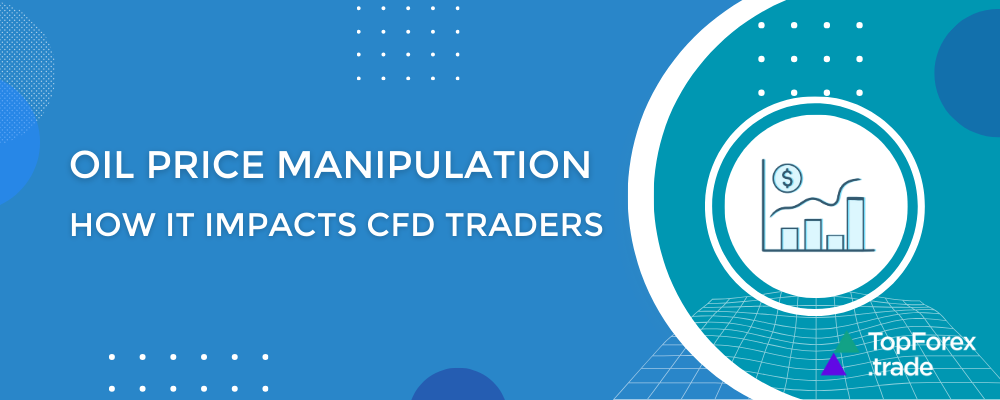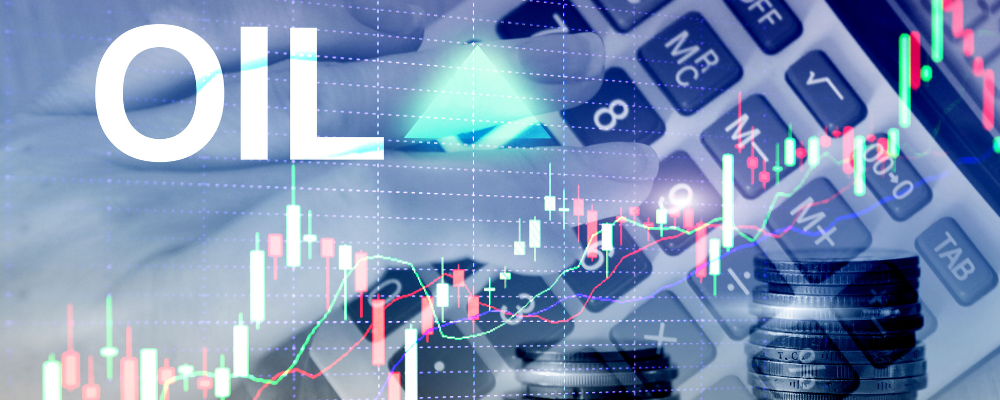Oil price manipulation explained: what CFD traders need to know

Oil price manipulation can create wild market swings, impacting CFD traders who rely on price movements for profit. From OPEC decisions to speculative trading and geopolitical tensions, various forces can artificially inflate or suppress oil prices. For CFD traders, this means increased volatility, unexpected risks, and opportunities—if they know how to navigate them. Let’s dive into how oil price manipulation works and what it means for your trading strategy.
How oil prices are manipulated

Oil price manipulation occurs through direct and indirect interventions in the market. This can be done by governments, financial institutions, hedge funds, and even large oil-producing nations. Below are the primary ways in which oil prices are artificially influenced.
1️⃣ OPEC’s production quotas and supply control
The Organization of the Petroleum Exporting Countries (OPEC) is a group of oil-producing nations that collectively decide on production levels. By increasing or cutting supply, OPEC can directly influence global oil prices.
- Example: If OPEC announces a production cut, supply decreases, leading to an increase in oil prices. Conversely, when they increase production, prices tend to drop.
- Impact on CFD traders: Sudden announcements from OPEC can cause sharp price movements, leading to stop-loss activations and increased volatility.
2️⃣ Strategic Petroleum Reserve (SPR) releases
Governments, particularly in the U.S., hold large reserves of crude oil called the Strategic Petroleum Reserve (SPR). These reserves can be released into the market to control prices.
- Example: In 2022, the U.S. released millions of barrels from its SPR to combat rising energy prices after Russia’s invasion of Ukraine. This helped temporarily lower crude oil prices.
- Impact on CFD traders: Unexpected SPR releases can cause rapid downward price movements, wiping out long positions.
3️⃣ Speculative trading by hedge funds and banks
Large financial institutions and hedge funds place significant bets on oil prices using futures contracts. Their massive trades can push prices up or down, even without changes in supply and demand.
- Example: In 2008, Goldman Sachs and other financial institutions were accused of artificially inflating oil prices by aggressively buying oil futures, pushing prices above $140 per barrel.
- Impact on CFD traders: Market moves driven by speculation can create false signals, making technical analysis less reliable.
4️⃣ Geopolitical tensions and artificial supply disruptions
Wars, sanctions, and political instability in oil-producing regions often lead to artificial price hikes. Traders fear supply shortages, which drives prices up—even when actual supply is unaffected.
- Example: Sanctions on Iranian oil in 2019 caused a spike in oil prices, as traders anticipated lower global supply. However, alternative suppliers stepped in, eventually stabilizing the market.
- Impact on CFD traders: Geopolitical-driven price spikes can create unpredictable swings, making it risky to hold overnight positions.
5️⃣ Market rumors and misinformation
Sometimes, false reports about supply shortages, trade restrictions, or production increases can lead to panic buying or selling.
- Example: In 2011, rumors of Saudi Arabia cutting production caused a brief price spike, only for the news to be debunked later. Traders who entered long positions at the peak suffered heavy losses.
- Impact on CFD traders: News trading strategies can be risky if traders react to unverified information.
Real case study: oil price crash 2020

One of the most extreme examples of oil price manipulation and its impact on CFD traders occurred in April 2020, during the COVID-19 pandemic.
- Event: Demand for oil collapsed due to global lockdowns, but production remained high. Storage facilities were full, leading to an unprecedented price crash.
- Impact: On April 20, 2020, U.S. crude oil futures (WTI) traded at negative prices (-$37 per barrel) as sellers were paying buyers to take oil off their hands.
- Manipulation factors:
- OPEC and Russia initially refused to cut production, exacerbating oversupply.
- Speculators dumped their positions, accelerating the price collapse.
- Oil storage limitations forced traders to sell at a loss.
- Effect on CFD traders:
- Many traders were caught off guard by the rapid price movements.
- Some brokers faced liquidity issues, preventing traders from closing positions.
- Leverage magnified losses, leading to margin calls and account wipeouts.
This event demonstrated how external forces and market manipulation could create extreme volatility, significantly impacting CFD traders.
How CFD traders can protect themselves

Oil price manipulation can make trading unpredictable, but there are strategies to mitigate risks and maximize opportunities.
➡ Monitor market news and events
- Keep track of OPEC meetings, geopolitical developments, and government interventions that could impact oil prices.
- Follow economic calendars for scheduled reports like U.S. crude oil inventory data.
➡ Use stop-loss orders and risk management
- Set stop-loss levels to protect against unexpected price swings.
- Avoid placing stop-losses too close to current price levels, as volatility can trigger premature exits.
▶ More about risk management tools: Forex risk management tools: automatic trading with popular market orders
➡ Diversify your portfolio
- Instead of trading only oil CFDs, consider other commodities, forex pairs, and indices to balance risk.
➡ Choose a broker with strong risk management policies
- Some brokers liquidated trader accounts during the 2020 oil crash due to inadequate risk management.
- Select brokers that offer negative balance protection and strong liquidity.
➡ Analyze technical indicators and market trends
- Use moving averages, Bollinger Bands, RSI, and MACD to assess trend strength and avoid false breakouts.
- Identify key support and resistance levels to anticipate potential price reversals.
➡ Be cautious with leverage
- High leverage increases both potential profits and losses.
- Consider using lower leverage ratios (e.g., 1:10 instead of 1:100) to reduce risk.
Top FX brokers for trading oil CFDs
Choosing the right broker is crucial when trading oil CFDs. Here are some of the best options:
HF Markets (HFM)
- HF Markets (HFM) – Offers tight spreads, fast execution, and advanced risk management tools.
Risk disclaimer: eToro is a multi-asset platform which offers both investing in stocks and cryptoassets, as well as trading CFDs.
CFDs are complex instruments and come with a high risk of losing money rapidly due to leverage. 51% of retail investor accounts lose money when trading CFDs with this provider. You should consider whether you understand how CFDs work, and whether you can afford to take the high risk of losing your money.
This communication is intended for information and educational purposes only and should not be considered investment advice or investment recommendation. Past performance is not an indication of future results.
Copy Trading does not amount to investment advice. The value of your investments may go up or down. Your capital is at risk.
Don’t invest unless you’re prepared to lose all the money you invest. This is a high-risk investment and you should not expect to be protected if something goes wrong. Take 2 mins to learn more.
eToro USA LLC does not offer CFDs and makes no representation and assumes no liability as to the accuracy or completeness of the content of this publication, which has been prepared by our partner utilizing publicly available non-entity specific information about eToro.
Related articles:
Oil price manipulation: impact on CFD traders - FAQ